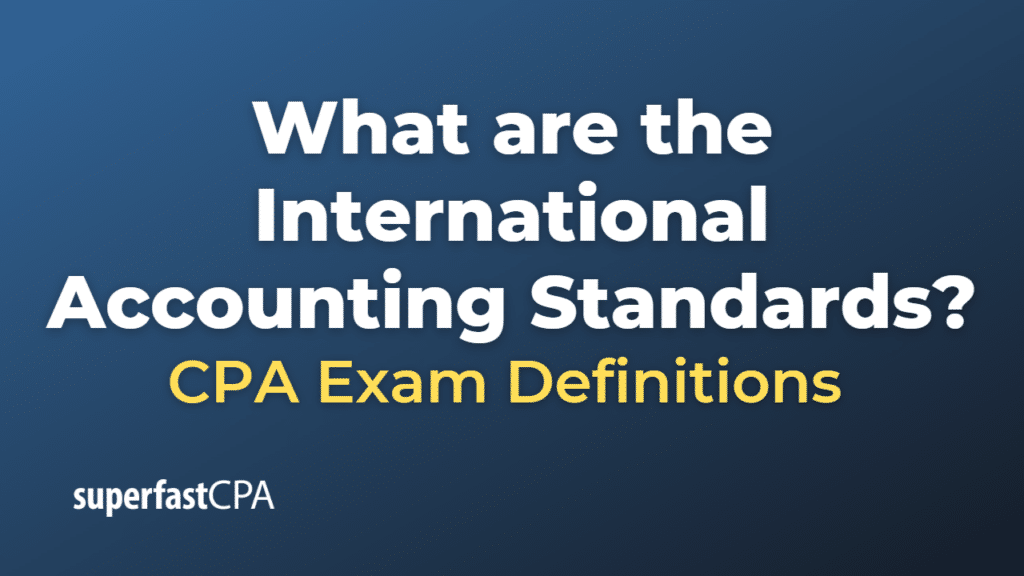International Accounting Standards
International Accounting Standards (IAS) are a set of accounting standards issued by the International Accounting Standards Board (IASB) and its predecessor, the International Accounting Standards Committee (IASC). These standards aim to provide a unified and understandable framework for accounting practices globally, to ensure the comparability and transparency of financial statements.
These standards cover a broad range of accounting activities. Some of the topics addressed by the IAS include:
- Presentation of Financial Statements (IAS 1)
- Inventories (IAS 2)
- Property, Plant and Equipment (IAS 16)
- Revenue Recognition (IAS 18 and superseded by IFRS 15)
- Income Taxes (IAS 12)
- Employee Benefits (IAS 19)
- Events After the Reporting Period (IAS 10) …and many others.
However, it’s important to note that since 2001, the IASB has been issuing new standards known as International Financial Reporting Standards (IFRS). Over time, many of the original IAS standards have been revised or replaced by IFRS standards. Despite this, the term “International Accounting Standards” is often used broadly to refer to both the original IAS standards and the newer IFRS standards.
The goal of both IAS and IFRS is to standardize accounting practices across different countries, which makes it easier for companies to operate in multiple countries and for investors to compare companies based in different countries. However, not all countries require or allow companies to use these standards. In the United States, for example, companies are typically required to use U.S. Generally Accepted Accounting Principles (GAAP), although some provisions allow certain types of companies to use IFRS.
Example of the International Accounting Standards
Let’s take IAS 16 “Property, Plant and Equipment” as an example. This standard outlines the accounting treatment for most types of property, plant and equipment (PP&E), which are considered tangible assets.
- Recognition: According to IAS 16, an item of property, plant, or equipment should be recognized as an asset if it is probable that the future economic benefits associated with the asset will flow to the entity, and the cost of the asset can be reliably measured. This essentially means that if a company purchases a piece of machinery for production, it will record it as an asset.
- Measurement at Recognition: The standard also provides guidance on how to measure the cost of an asset at the time of its acquisition or construction. This cost includes its purchase price and any costs directly attributable to bringing the asset to the location and condition necessary for it to operate as intended.
- Depreciation: IAS 16 specifies that each part of an item of property, plant and equipment with a cost that is significant in relation to the total cost of the item shall be depreciated separately. This is to account for the wear and tear, deterioration, or obsolescence of the assets.
- Disposals: When an asset is disposed of, the company is required to de-recognize (remove) it from the balance sheet and recognize any resulting gain or loss (the difference between the proceeds and the carrying amount) in the income statement.
It’s important to note that while IAS and IFRS are designed to standardize accounting practices, interpretations and applications can still vary. Therefore, it is vital for companies and investors to understand not only the standards themselves but also how they are applied in practice.













